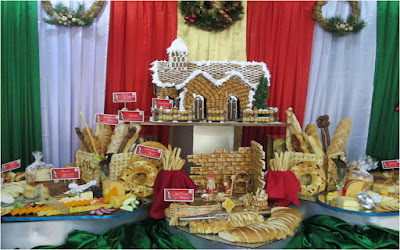CANDY MAKING
This blog explains all about the Candy, its history, classification, process of making & all other aspects to educate the audience about its popularity.
WHAT IS CANDY?
Candy, also called sweets or lollies, is a confection that
features sugar as a principal ingredient.
HISTORY
Prior to the 1900s, candy was commonly sold unwrapped from
carts in the street, where it was exposed to dirt and insects. With
advancements in technology, wax paper was adopted, and foil and cellophane were
imported from France by DuPont in 1925. Necco packagers were one of
the first companies to package without human touch.
CLASSIFICATION
TOOLS USED
Pots: Heavy (copper, anodized aluminum, cast aluminum
or cast iron) pot with deep and straight sides; this will help prevent boil
overs. It should be large enough to hold 3 to 4 times the volume of the
ingredients.
Spoons: Long handled wooden spoons unless you can find
heat proof metal spoons. Make sure it is clean and dry EVERY TIME you dip it in
the candy mixture to stir.
Candy Thermometer: Experienced candy makers use the Cold
Water Test and know when it's done, but use a Candy Thermometer at all
times. Select one that registers from 100 to 400 degrees F.
Pastry brushes: Whenever a recipe calls for a hot,
cooked sugar mixture, you will need to wash down the sides of the pan with a
heat-proof pastry brush dipped in water.
Cooling and kneading surface: Marble or granite surface
or vegetable-sprayed parchment paper placed on the back of a baking sheet, or a
Silpat mat.
Aluminum foil: For a candy making surface that can take the heat, use a sheet of foil.
CANDY MAKING INGREDIENTS
Crystalline table sugar: Use the best quality granulated,
everyday white CANE sugar when making candy.
Corn Syrup: use light corn syrup if not specified in a
recipe. If you only have dark, it can be used, but the candy will have a slight
molasses taste and color. If the recipe specifies, follow it.
Molasses: conveniently for butterscotch makers, molasses contains a very dark caramel with a distinct burnt edge and a bit of sharpness. Molasses is so strongly flavored, that butterscotch recipes rarely use it without it being diluted
Molasses: conveniently for butterscotch makers, molasses contains a very dark caramel with a distinct burnt edge and a bit of sharpness. Molasses is so strongly flavored, that butterscotch recipes rarely use it without it being diluted
ACIDS: Cream
of Tartar, Lemon Juice, Vinegar.
FATS: Butter
and fats affect the sugar's final chemical structure.
DAIRY: Use heavy cream for its higher butterfat than
milk, gives candy a smooth texture and
mouth feel.
FLAVORING: Candy oils can be used and are the
preferred flavoring for candy.
FOOD COLORING:
For sugar based candy, food coloring is best to use. It is a liquid, which comes in little bottles available at any supermarket or from a cake decorating store (lots of colors).
GELATIN: powdered or leaf, starch, pectin, or gum to
the boiling mixture the sugar will gel and make products like jelly
beans, Turkish delight, and licorices.
METHOD OF MAKING CANDY
STEP 1: PREPARE
THE SUGAR SOLUTION
STEP 2: COOK (BOIL)
THE SUGAR SOLUTION INTO A CONCENTRATED SUGAR SYRUP
STEPS 3 AND 4: COOLING AND BEATING (OPTIONAL)
TEXTURES OF CANDIES
Type 1: Tiny
crystals result in candies with soft, creamy and smooth textures. Ex:- Fondant
, Marshmallows
Type 2: Candies with larger crystals. Ex:- Rock Candy, Gummy Candies *(Gummy bears, Jelly
beans, Gumdrops) , Hard Candy (Lollipops) , Toffee.
CONCLUSION
Candies are hot favourites among children & they come in
variety of colours & shapes to attract this category of guest. It is quiet
complicated work as the ingredients & methods implied are very sensitive to
handle. Candy making requires a real expertise & close understanding of
colour & flavor combinations.
By BRAND CAI,Faculty










Thank you very much
ReplyDelete